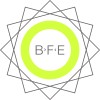
Design Air
Design Air, Inc is a fully functioning HVAC company. We have been a part of the HVAC industry for 26 years and we are located in Hillburn, NY. We specialize in Heating and Air Conditioning. We do everything from installation right to regularly servicing your unit. We also offer 24 hour service, which really separates us from most of the other local HVAC companies. We pride ourselves on our quick response and courteous employees. We won't leave your home or business until you are 100% satisfied!






